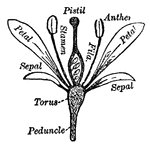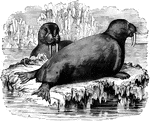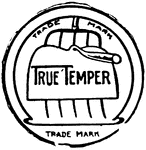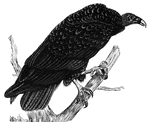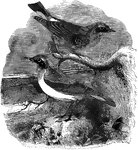
Sebastian Cabot
Italian navigator and cartographer. Sebastian Cabot (c. 1474 – c. December 1557) was an Italian explorer,…
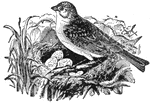
Yellowhammer
The yellow hammer, or yellow bunting; a bird widely distributed over Europe and North America

Catfish
Catfish are found in lakes and streams of North America, usually at muddy bottoms. Catfish have a large…
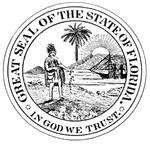
Florida Seal
The former Great Seal of Florida, featuring an indian, palm tree, the sun, and some uncharacteristic…

Drilling Troops
The influx of Northern regiments of troops into Washington during the early days of the war rendered…

Fort Hatteras
View of the camp of the twentieth Indiana Regiment; also of Fort Hatteras and the anchorage at Hatteras…

Evacuation of Corinth
Evacuation of Corinth, Mississippi- burning of stations, warehouses and supplies- entry of Federal Troops.…
Rappahannock
"The city of Fredericksburg, VA., from the North side of the Rappahannock- from a sketch by our special…
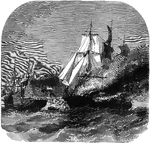
Harvey Birch
"Burning of the American merchantman "Harvey Birch," of New York, Captain Nelson, in the British Channel,…

Fort Hatteras
"General view of Forts Hatters and Clark, N. C., captured on the 29th of August, 1861, by the Federal…

Fort Thompson
"View of New Berne, N. C., from the interior of Fort Thompson after its capture by the Federal forces-…

Schooners
"Removing sunken schooners from Core Sound, N. C., placed to obstruct the passage of the Federal gunboats,…

Rolla Camp
"Encampment of the Federal army near Rolla, Mo. The city of Rolla has been famous since the death of…

Port Royal Ferry
"Successful attack of a detachment of the Federal forces, under General Stevens, supported by four gunboats…

View of Strasburg
"View of the town of Strasburg, valley of the Shenandoah, occupied by the Federal forces under General…

Admiral Silas H. Stringham
"Rear admiral Stringham, born in Middletown, Orange County, N. Y., November 7th, 1798; died in brooklyn,…

General John G. Foster
"General Foster, born in Whitefield, N. H., May 27th, 1823, died in Nashua, H. H., September 2nd, 1874,…

Federal Hill
"Federal Hill, Baltimore, taken from the North side basin, occupied by the Federal Troops."— Frank…
Fort Clinch
"Exterior view of Fort Clinch, on Amelia Island, Fla., commanding the Harbor of Fernandina, captured…
Fort Clinch
"Interior view of Fort Clinch, on Amelia Island, Fla., commanding the Harbor of Fernandina, captured…

Common Seal
"The ground-color of the hair or skin, when this animal is alive and dry, is pale whitish-gray, with…
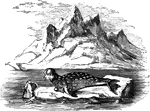
Hooded Seal
"Also called the Crested Seal, remarkable for possessing, about two inches from te extremity of the…

Sea Bear
"It is the size of a large bear; girth at the sholder, five feet, near the tail, twenty inches; fur…
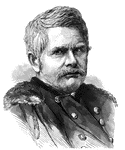
General Edward O. C. Ord
"General Ord, born in Cumberland, Md., October 18th, 1818, died in Havana, Cuba, July 22nd, 1883, was…
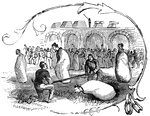
Hurdle Sack Race
"Federal soldiers participating in a hurdle sack race. Thanksgiving festivities at Fort Pulaski, Ga.,…
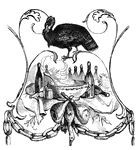
Thanksgiving Dinner
"Thanksgiving dinner. Thanksgiving festivities at Fort Pulaski, Ga., Thursday, November 27th, 1862.…
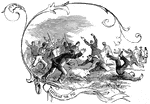
Catching the Pig
"Soldiers playing 'catch the pig.' Thanksgiving festivities at Fort Pulaski, Ga., Thursday, November…

Burlesque Dress Parade
"Soldiers participating in a burlesque dress parade. Thanksgiving festivities at Fort Pulaski, Ga.,…

Thanksgiving Ball
"Soldiers and women participating in a Thanksgiving Ball. Thanksgiving festivities at Fort Pulaski,…
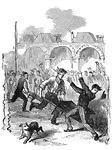
Wheelbarrow Race
"Soldiers aparticipating in a wheelbarrow race. Thanksgiving festivities at Fort Pulaski, Ga., Thursday,…

Climbing Pole
"Soldiers climbing up a greased pole. Thanksgiving festivities at Fort Pulaski, Ga., Thursday, November…

Banks Expedition
"The Banks Expedition- scene on the hurricane deck of the United States transport North Star-…
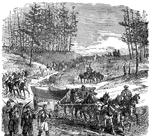
Pontoon Bridge
"The Pontoon bridge 'On The March'- the pontoon wagons on their way from Aquia Creek to the Rappahannock.…

Confederate Batteries
"Fredericksburg, Va., and the Confederate batteries and pickets, as seen from Falmouth Heights, headquarters…

Confederate Invasion
"The Confederate invasion of Maryland and Pennsylvania. The Confederate cavalry crossing the Potomac,…
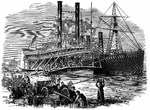
Banks Expedition
"The Banks Expedition- scene on the levee, Baton Rouge, La. Contrabands unloading military stores from…

Fort Walker
"View from the interior of Fort Walker, Hilton Head, S. C. looking inland, showing the defenses from…

Northern Armies
"The enthusiasm of the Northern armies- re-enlistment of the Seventeenth Army Corps. Financial tests…

Battle of Spottsylvania
"The war in Virginia. Battle of Spottsylvania Courthouse- opening of the fight at Alsop's Farm, May…

Hooker's Battle
"The war in Tennessee. Hooker's Battle above the clouds, and capture of the Confederate position on…

Fort Stevens
"The operations near Washington, scene of the fight in front of Fort Stevens, July 12th-13th, 1864.…
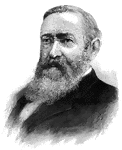
General Benjamin Harrison
"General Harrison, twenty-third President of the United States, was born at North Bend, Ohio, August…
!["The war in Virginia. The Twenty-second [African American] Regiment, Duncan's Brigade, carrying the first line of Confederate works before Petersburg. On the morning of the 15th of June, 1864, General Hinks formed his command in line of battle, and advanced upon the Confederates, with Duncan commanding his right and Holman his left. The result of this charge was waited for with great anxiety. The majority of the whites expected that the [African American] troops would run, but the sable forces astonished everybody by their achievements. With a wild yell that must have struck terror into the hearts of their foes, the Twenty-second and Fifth United States [African American] regiments, commanded by Colonels Kidder and Connor, charged, under a hot fire of musketry and artillery, over the Confederate ditch and parapet, and drove the enemy before them, capturing a large field-piece, and taking entire possession of their works, its defenders, Ferrybee's Fourth North Carolina Cavalry, and Graham's Petersburg Battery, seeking safety in rapid flight, leaving their dead and wounded in the works."— Frank Leslie, 1896](https://etc.usf.edu/clipart/11700/11799/duncan-brig_11799_mth.gif)
Duncan's Brigade
"The war in Virginia. The Twenty-second [African American] Regiment, Duncan's Brigade, carrying the…

Campaign in Georgia
"The campaign in Georgia. A baggage train crossing the mountains in a storm. General Sherman, after…
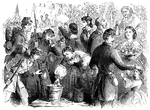
Daughters of Maryland
"How the Daughters of Maryland received the Sons of the North as they marched against the Confederate…

Fork-Tailed Kite
"The fork-tailed kite, (N. furcatus) is twenty-five inches long; the wings and tail black;…
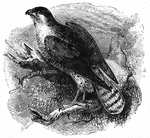
Goshawk
"The American goshawk &mdash the black-cap haw of Wilson &mdash A. atricapillus which has been…
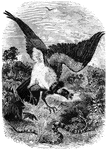
King Vulture
Genus sarcoramphus, a large vulture found in the tropical regions of the Americas, sometimes…
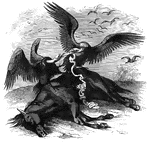
Turkey Buzzards
Genus Cathartes, found in the Americas, sometimes as far north as New England. These buzzards…

Red-Wing Thrush
The red-wing thrush migrates from the north to the south of Europe in the winter, feeding on worms and…
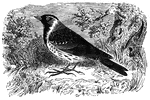
Common Snowbird
Found as far north as Greenland, the common-snow bird migrates as far south as Virginia in the winter.

Shore Lark
Found in the north of Europe and Asia, specimens of the shore-lark have been ound as far south as France…


